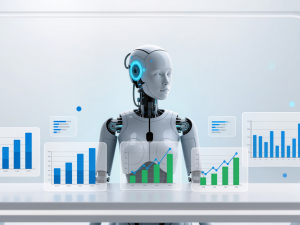University campuses are no longer just clusters of classrooms and libraries. They’re evolving into living, breathing ecosystems connected by data, sensors, and real-time intelligence. Across the world, higher education institutions are quietly transforming into “smart cities,” using Internet of Things (IoT) technology to make daily operations more efficient, sustainable, and student-focused.
The idea is simple but powerful: if cities can use technology to manage traffic, energy, and public services, why can’t campuses do the same? Through a network of sensors embedded in buildings, classrooms, and outdoor spaces, universities are now able to collect and analyse data on everything from energy consumption and air quality to student movement and facility usage. The result? More responsive, efficient, and adaptable environments that can actively support learning and wellbeing.
These IoT-powered systems don’t just automate tasks, they inform decisions. Smart meters adjust heating and cooling based on room occupancy, waste bins send alerts when they’re full, and lighting responds to daylight patterns to reduce energy waste. At the same time, connected security cameras and digital access systems improve safety, while environmental sensors ensure healthier air in study areas and dormitories.
For students, this digital infrastructure isn’t just about convenience, it’s about experience. Smart campuses can personalise learning, streamline campus life, and foster a stronger sense of connection to the spaces they inhabit. In many ways, the modern university is becoming a microcosm of future cities where technology quietly supports sustainability, safety, and human wellbeing.
But how do these “smart campuses” actually function behind the scenes? And what kind of data is shaping the way students live, learn, and interact on campus?
Let’s take a look at the connected systems that are redefining university life one sensor at a time.
What Makes a Campus ‘Smart’?
At its core, a smart campus functions like a miniature city one that thrives on connectivity, data, and automation. Every part of campus life buildings, walkways, classrooms, and even cafeterias can be connected through IoT (Internet of Things) devices that communicate with each other to create a seamless, efficient ecosystem.
Think of IoT as the nervous system of the campus. Sensors act as the sensory organs collecting data on temperature, lighting, motion, air quality, and even noise levels. These sensors feed data into central platforms where it’s processed, analysed, and used to make decisions either automatically or with human input.
Here’s how this connected ecosystem typically works:
- Data Collection: Sensors capture information from various campus environments, classrooms, dorms, parking lots, or outdoor areas.
- Connectivity: That data travels through wireless networks or cloud platforms, connecting different systems together.
- Analysis: AI or data analytics tools interpret the incoming data, identifying patterns or inefficiencies.
- Action: The system responds by turning off unused lights, adjusting temperatures, sending security alerts, or optimising cleaning and waste collection.
This loop of collect → connect → analyse → act is what makes a campus truly “smart.”
It’s not just about automation; it’s about creating feedback loops that keep improving over time. For example, if classroom sensors show that certain lecture halls remain half-empty every Monday morning, scheduling systems can automatically reallocate those classes or adjust heating and lighting to save energy.
Smart campuses are also designed with scalability in mind. They start small, maybe with smart lighting or Wi-Fi-based attendance tracking and gradually expand to include sustainability, safety, and well-being systems across the entire campus. The key is integration: different systems talking to each other instead of operating in silos.
In essence, a smart campus transforms data into decisions. It’s not just a place where students learn, it’s an environment that learns about its students too.
How IoT Is Transforming Campus Life
Once IoT enters the campus ecosystem, it quietly reshapes almost every corner of student life from how classrooms are lit to how students feel walking back to their dorms at night. The transformation isn’t loud or flashy; it’s data-driven, invisible, and surprisingly personal.
Let’s look at the biggest ways it’s changing daily life:
1. Energy Efficiency and Sustainability
Universities are some of the largest energy consumers, but smart technology is flipping the script. IoT-enabled sensors in buildings automatically adjust lighting, heating, and air conditioning based on occupancy. If a lecture hall is empty, the lights turn off and the temperature resets no human intervention needed.
Some campuses, like Stanford and MIT, are already using real-time energy dashboards that track consumption across buildings, helping facilities teams reduce waste and promote greener habits among students.
Beyond just savings, this creates awareness students begin to see sustainability as something tangible, not theoretical.
Smart grids and renewable integrations are also rising. Sensors collect data from solar panels or wind turbines, ensuring that clean energy sources are used efficiently. Over time, this leads to a measurable reduction in carbon footprint, a massive win for universities aiming for net-zero goals.
2. Campus Safety and Security
Safety is one of the most visible (and appreciated) applications of IoT. Smart cameras equipped with motion sensors and AI analytics can detect unusual activity in real time.
For instance, if movement is detected in a restricted lab or after-hours in a library zone, the system can automatically send alerts to campus security.
IoT-based emergency systems also play a vital role. Sensors and connected alarms can guide students to the nearest exit during fires or natural disasters. Smart ID systems using mobile access or biometric verification restrict entry to authorised areas only, making campuses safer without the need for constant human surveillance.
This creates a sense of security that students and parents deeply value especially in large, urban universities.
3. Smarter Waste Management
It’s not the most glamorous topic, but it’s one of the smartest applications.
“Smart bins” equipped with fill-level sensors notify maintenance teams when they’re nearly full, allowing waste collection only when necessary. This avoids overflowing bins, reduces unnecessary collection trips, and saves fuel.
When combined with data analytics, universities can even identify which areas produce the most waste, enabling better planning and awareness campaigns.
In short cleaner campuses, fewer emissions, and smarter logistics.
4. Enhancing Student Well-being
IoT isn’t just about buildings and bins, it’s also about people.
Sensors and connected platforms can track factors like air quality, temperature, and lighting in dorms and classrooms to ensure comfort and safety.
Some universities go a step further by analysing how students use facilities. For example, if gym data shows overcrowding during certain hours, schedules can be adjusted or extra time slots opened. Similarly, smart seating or lighting systems in libraries can guide students to open study spaces, reducing stress during finals season.
IoT also supports mental health indirectly. By making everyday routines smoother finding parking, locating study spots, maintaining comfort it removes small friction points that often add up to student stress.
5. Learning and Engagement
The classroom experience itself is evolving too. Smartboards, attendance sensors, and adaptive lighting systems adjust based on class size and time of day, enhancing concentration.
IoT-based learning analytics also help instructors understand participation levels. If engagement data shows that students tend to lose focus after a certain time, course design can be adjusted accordingly.
This approach turns learning into a two-way street where the environment listens, learns, and adapts.
The Benefits of Smart Campus Systems
When IoT-powered systems work together, a campus becomes more than just a collection of classrooms and dorms; it becomes an ecosystem that learns, adapts, and improves over time. From sustainability goals to student wellbeing, these technologies are creating measurable, meaningful change in higher education.
Let’s unpack the biggest wins universities are seeing with their smart campus upgrades:
1. Efficiency That Saves Time and Money
One of the biggest advantages of IoT in education is operational efficiency.
Universities manage massive infrastructures lighting thousands of rooms, maintaining HVAC systems, and handling unpredictable energy spikes. IoT sensors help facilities teams predict problems before they escalate.
For instance, a connected air conditioning unit can alert maintenance staff before it fails, preventing downtime and saving repair costs. The same predictive logic applies to plumbing, electrical systems, and even elevators. It’s proactive problem-solving, not reactive repair.
Over time, these small optimisations can save campuses millions annually funds that can instead go toward scholarships, lab upgrades, or student programs.
2. Sustainability That Students Can See
Younger generations are demanding greener campuses, and IoT gives universities the data to prove progress.
By collecting and analysing energy usage, water consumption, and waste data, universities can set real sustainability benchmarks and actually hit them.
For example, smart irrigation systems use soil moisture data and weather forecasts to water lawns only when needed, dramatically cutting water waste. Meanwhile, connected meters track emissions and provide transparent reporting for environmental initiatives.
When sustainability is backed by data, it becomes more than a buzzword it becomes culture.
3. Safety With a Smarter Shield
Connected security systems don’t just react; they predict and prevent.
IoT-based cameras and sensors can detect unusual behaviour patterns like an open lab door late at night or crowd build-up in certain zones and alert security before problems arise.
Some campuses have even integrated wearable panic buttons for students and staff, enabling real-time emergency alerts and faster responses from campus safety teams.
The result? A campus environment that feels protected yet non-intrusive safety woven quietly into everyday life.
4. A Better Student Experience
At its core, a smart campus is designed to make student life easier and more personalised.
Imagine an app that shows you which study rooms are available, the air quality in your classroom, or which cafeteria line is shortest. That’s what IoT data enables.
Universities can also use aggregated (anonymous) data to improve services: from adjusting shuttle bus timings based on peak usage to designing wellness programs around stress indicators tracked through campus systems.
Every student ends up with a smoother, more efficient, and more responsive learning environment, something that truly matters in an age where digital convenience shapes expectations.
5. Data That Drives Decisions
Smart campuses thrive on insight. Every connected sensor generates data that helps administrators make more informed decisions whether it’s about budgeting, space utilisation, or course planning.
This data-driven approach helps universities identify trends early like which buildings need upgrades, when traffic peaks on certain walkways, or even how classroom environments affect learning outcomes.
It’s not just management made easier, it’s education made smarter.
Real-World Examples of Smart Campuses
Smart campuses aren’t just concepts they’re already happening. Here are a few universities leading the charge in transforming education spaces with IoT and data-driven systems:
Arizona State University (ASU) – A Living Lab of Innovation
ASU has built one of the most connected campuses in the world. IoT sensors automatically adjust lighting, temperature, and energy use, cutting waste by 30%. Smart street lights brighten when motion is detected, enhancing safety, while predictive maintenance systems fix problems before students even notice them.
University of Glasgow – Sustainability in Action
At Glasgow, IoT drives the university’s carbon-neutral goals. Smart lighting and temperature controls respond to real-time occupancy, while energy and waste data help the campus track and actively reduce its environmental footprint.
National University of Singapore (NUS) – Smart Wellness
NUS uses connected air sensors and smart ventilation systems to maintain ideal indoor air quality, improving comfort and focus. Students also access real-time updates on gym occupancy and study-space availability through mobile apps blending tech with wellbeing in a practical way.
Are There Any Downsides?
While smart campuses sound like the perfect blend of tech and sustainability, they’re not without their hurdles. Implementing IoT at scale brings along a few real-world challenges universities have to navigate carefully:
1. Privacy and Data Security
With so many sensors collecting data from building entry to energy use, maintaining privacy is a top concern. Universities must ensure strict data governance, transparency, and cybersecurity protocols to protect student and faculty information.
2. High Implementation Costs
Installing thousands of sensors, upgrading infrastructure, and integrating systems can be expensive. For many institutions, this becomes a long-term investment that needs clear ROI in the form of energy savings or improved operational efficiency.
3. System Complexity
IoT systems require continuous monitoring, updates, and sometimes complex integrations between devices and data platforms. Managing these systems demands trained staff and technical expertise which not every campus has yet.
4. Equity and Access
As technology-driven campuses become the norm, the gap between well-funded and under-resourced institutions may widen. Ensuring that innovation benefits all students, not just those in top-tier universities remains a key challenge.
Could Smart Campuses Become the Norm?
Universities aren’t just experimenting with IoT anymore, they’re quietly building the blueprint for future-ready education environments. As smart technologies continue to mature, campuses are likely to evolve into fully integrated ecosystems that think, respond, and adapt to student needs in real time.
Here’s how that future is shaping up:
1. Sustainability as a Core Priority
With rising environmental awareness, sustainability will drive most tech adoption decisions. Expect smart energy grids, predictive maintenance systems, and renewable energy integration to become standard practice helping campuses move closer to carbon neutrality.
2. Personalised Student Experiences
IoT data won’t just track energy usage, it will help universities understand how students interact with spaces. Imagine a library that adjusts lighting based on how many students are studying or a fitness centre that schedules maintenance automatically after peak use. These micro-adjustments will create a more personalised, efficient student experience.
3. Remote and Hybrid Learning Support
IoT-enabled classrooms will bridge the gap between in-person and remote learning. Sensors and smart devices can adjust acoustics, temperature, and camera positioning automatically ensuring that hybrid classes feel more seamless and human.
4. Smarter Campus Planning
Data collected from sensors will inform everything from building designs to student services. Universities will know which spaces are underused, what times buildings consume the most energy, and where safety risks might emerge allowing them to design better, safer, more efficient campuses.
5. Collaboration Between Universities and Cities
As campuses get smarter, they’ll start to resemble miniature versions of smart cities collaborating with local governments and tech providers. Shared infrastructure, energy grids, and mobility solutions could turn university districts into living labs for sustainable urban development.
Conclusion: The Connected Campus Revolution
The idea of the smart campus isn’t just futuristic, it’s already unfolding. Universities are using IoT and sensor technology to track everything from classroom air quality to how full the trash bins are. It’s less about flashy gadgets and more about building campuses that think ahead, anticipating needs, saving energy, and creating safer, healthier environments.
By collecting and analysing real-time data, universities are turning insight into action. Lights that dim when rooms empty out, sensors that detect air quality issues, or digital systems that redirect maintenance staff before problems escalate all of this contributes to a smoother, more sustainable student experience.
But the real game-changer isn’t just efficiency, it’s empathy. Smart campuses are learning to care in ways traditional infrastructure never could. They adjust to student patterns, promote mental well-being, and offer data that helps universities make decisions with people—not just profits in mind.
As campuses continue to evolve, one question lingers:
Will the universities of the future look more like cities or will cities start to look more like smart campuses?
FAQs:
1. What does a “smart campus” actually mean?
A smart campus uses Internet of Things (IoT) devices like sensors, smart meters, and connected systems to gather and analyze data. This helps universities improve energy efficiency, campus safety, waste management, and student wellbeing through data-driven insights.
2. How do IoT and sensors make campuses more sustainable?
Sensors monitor lighting, temperature, and water use in real time, adjusting automatically to reduce waste. They also track air quality and energy consumption, helping universities reach their sustainability and carbon neutrality goals.
3. How is student safety improved with IoT technology?
IoT-enabled cameras, access control systems, and emergency alert networks provide instant updates and faster response times during incidents. Students can also receive real-time notifications during emergencies, improving overall safety.
4. Are smart campuses only about technology?
Not really. While technology is the enabler, the real goal is better student experience. Smart campuses use data to make environments more comfortable, accessible, and supportive from optimising study spaces to tracking wellness metrics.
5. What’s next for smart campuses in the future?
Expect more AI integration, predictive analytics, and sustainable automation. The next phase of smart campuses will focus on anticipating student needs before they arise making universities more efficient, inclusive, and human-centric.






